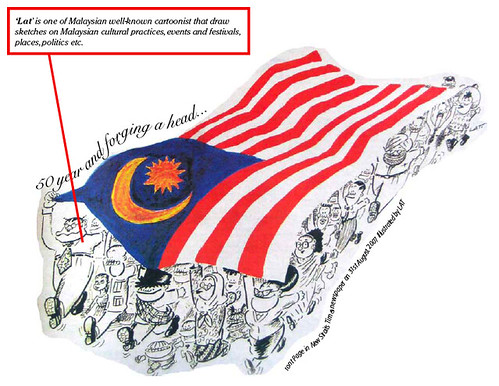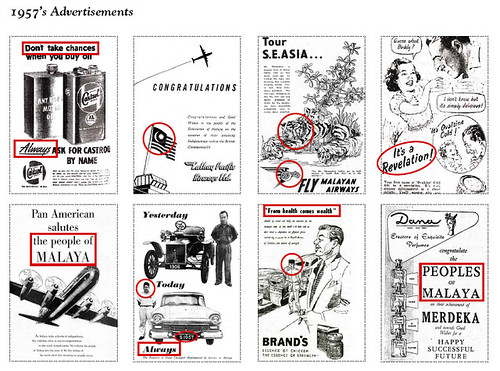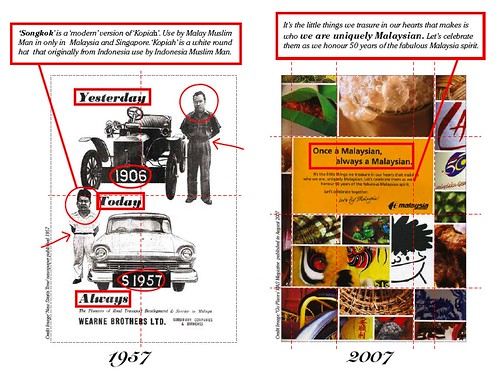
A PhD investigation on comm. design contribution on Malaysian Identity by Nurul Rahman is licensed under a Creative Commons Attribution-Noncommercial-No Derivative Works 2.5 Australia License.
Based on a work at www.nurulrahman.com.
GRC Spring 2008 just passed. I think it went well. I’ve learn lot more than I thought I would from the respond of the panel and from others presentation. It’s different feeling after 6 times been through the GRC, this time I was more critical in others people comments on my research, I think I was more confident too in presenting my argument.
In my research, I’m arguing that Malaysia National Identity is a constructed Identity. But how do I relates it to Communication Design and what will be my contribution in this research, PhD? Let’s see who said what about Malaysian Identity?
Shamsul A.B, a Malaysian anthropologist in 2001 wrote an interesting paper questioning on the origin of Malay ethnic identity, the dominant ethnics in Malaysia.
A history of identity, an identity of a history “ The idea and practice of ˜malayness in Malaysian reconsidered argued that the ˜Malay-Malayness identity is not innate as but rather learned or constructed.
As Shamsul wrote:
In Malaysia most historians and other scholars [in the humanities] accept ‘colonial knowledge’ as the basis of Malaysian and Malay history. Moreover, they do so in what seems like an almost unproblematised manner, even though politico-academic attempts are being made to ‘indigenise’ Malaysian history and the ‘Malay’ viewpoint has been privileged. [Such attempts are admirable, and yet it is good to realise that this emphasis on the] ¦ Malay perspective has been primarily motivated by a ‘nationalistic’ need to reinterpret history, and not by the urge to question the ways historical knowledge per se (itself) has been constructed. In Malaysia historical knowledge, a crucial element in every identity formation is still based on colonial knowledge; [¦] “ Shamsul AB (2001)
Still that does not answer how does this argument relates to communication design. Let me take you through a journey. Most of the visual we see around us that informed and educate us are mainly from advertisements. Communication medium can be powerful sometimes. It can be seductive and provocative, it stimulate our thinking about and towards others such as issues about environment, materials that we want but might not need and etc. Communication designers work closely in this areas that connect to different communication medium. Their roles is to suggest a methods or strategy that could communicate the product, visual, information etc. to the spectators. Most of the time it visual is chosen as one of the medium to reflect to others or to attract the audience. Communication designer is a communication agent that in some ways could create a system for people to communicate and connect to each other. Some of the communication designers role are used for the purpose of selling and not communicating.
The fact that communication designers could be point out as someone who is responsible of making or delivering the selling point to other and provoke other to make action, reflect or believe. Adolf Hitler, knows and understand well the power of communication, most of all the visual language in communication. The use of colors, shape, lines, space, font type etc. are the tools that are use as a way to influence others about German status at that time. However, without strong power control visual itself could hardly work. But together it could create a sense of believe in people’s mind.
“Picture says a thousand words” is an interesting line to start with.



